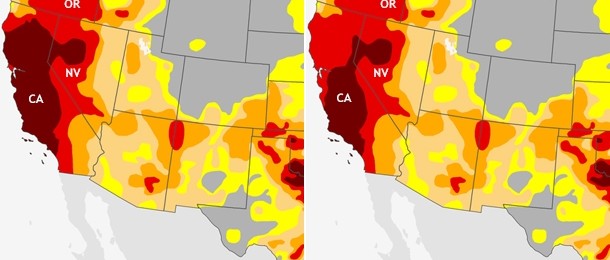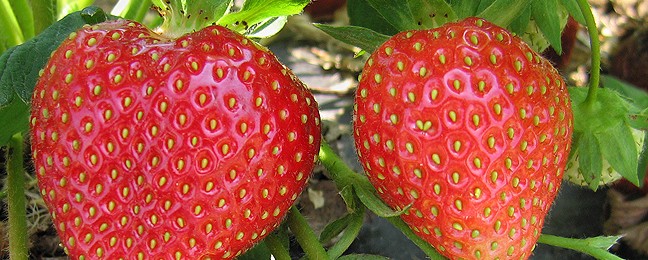-

Two new reports on the Midwestern drought of 2012 and the continuing drought conditions in California are now available online. The report on the 2012 drought in the central US and how it evolved from the floods of 2011 was published by the National Drought Monitor today. A description of the conclusions and links to…
-

The Packer published an article this week saying that strawberries from Florida were running about a week behind normal. They attributed it to cooler than normal evening temperatures early in the season. This is expected to result in a decrease in volumes for the next couple of weeks due to slower blooms. You can read…
-

The Washington Post noted in a blog posting this week that this is the first year ever that Anchorage, Alaska, never went below zero. Record lows for this time of year are around -20 to -25 F, so this is a significant departure from what you might expect in the coldest years. The blog noted…
-

Even though this week looks cool and rainy, warmer temperatures for the 6-10 day and 8-14 day forecasts both show a much enhanced chance of above normal temperatures as the arctic air retreats to the northern parts of North America. This should reduce heating costs and relieve cold stress on livestock and outdoor workers. …
Posted in: Climate outlooks -

Several of my meteorologists friends posted this image on Facebook yesterday from NWS Amarillo (picture by Joshua Thomas on 1-9-2015 in New Mexico): This is one of the best pictures of atmospheric optics I have seen, particularly for an area outside of Antarctica. Atmospheric optics is the study of how light moves through water…
-

A new large-scale study by University of Washington scientists shows that agriculture as well as oil and gas production is contributing to the darkening of snow fields across the Northern Hemisphere, according to Journal of Geophysical Research: Atmospheres. This is of concern for long term climate balance since normally white snow reflects most sunlight back…
Posted in: Climate and Ag in the news -

Today (Saturday) may be the driest day of the week for most of the Southeast. A coastal storm should bring rain to coastal areas of the Southeast this weekend while the next large-scale storm moves into the area from the west on Sunday evening into Monday. A second storm is expected to move through the…
Posted in: Uncategorized